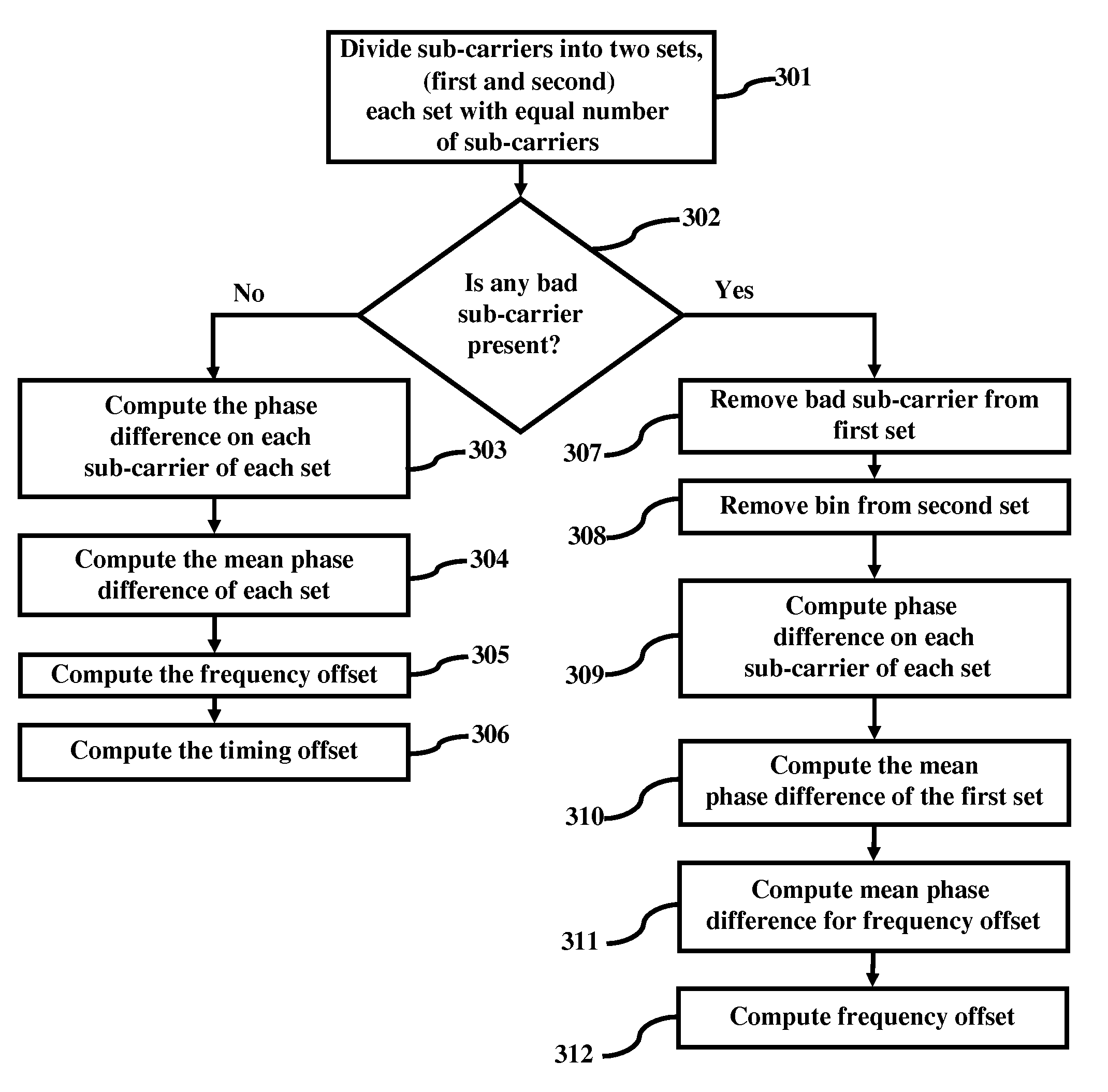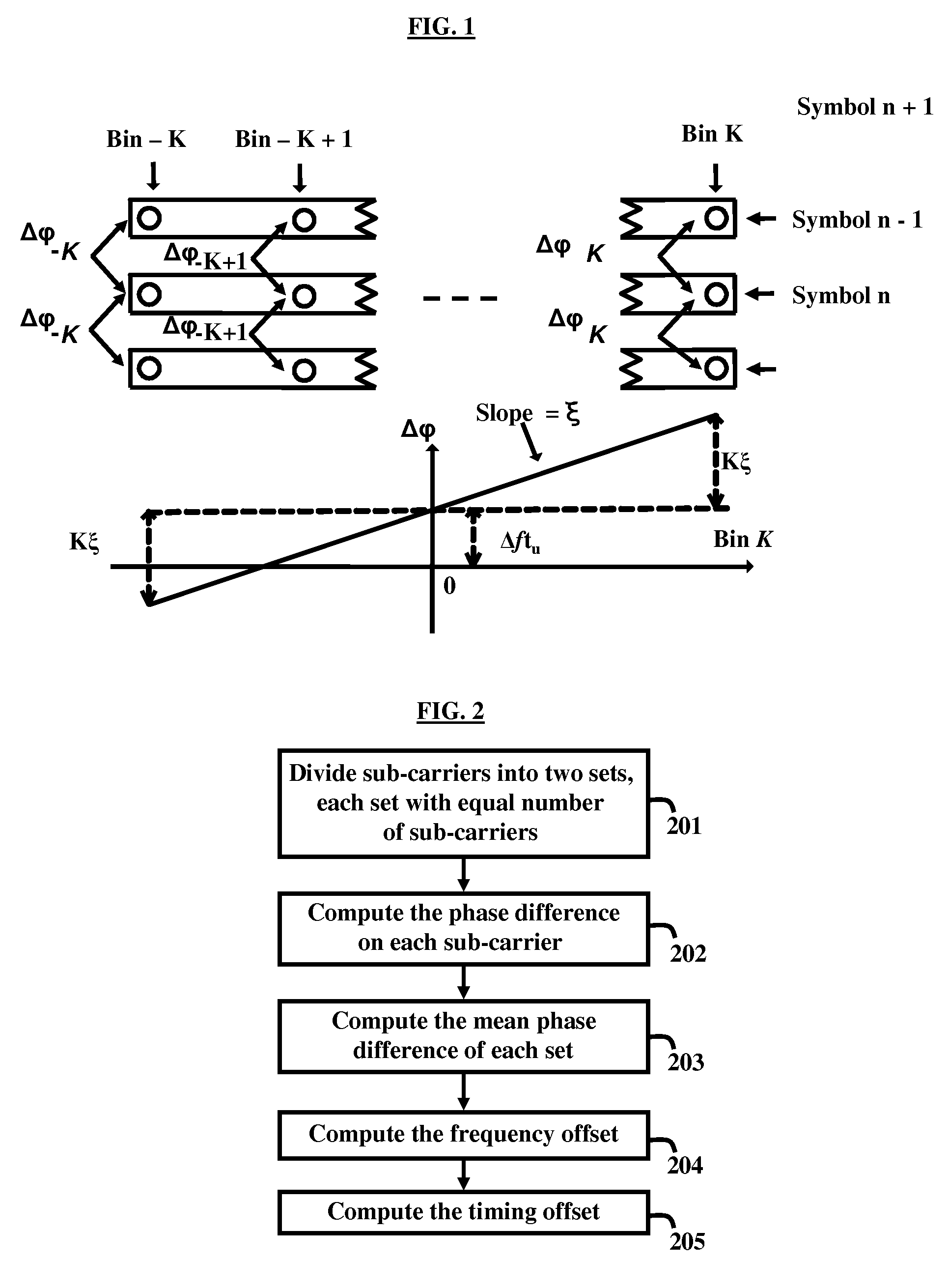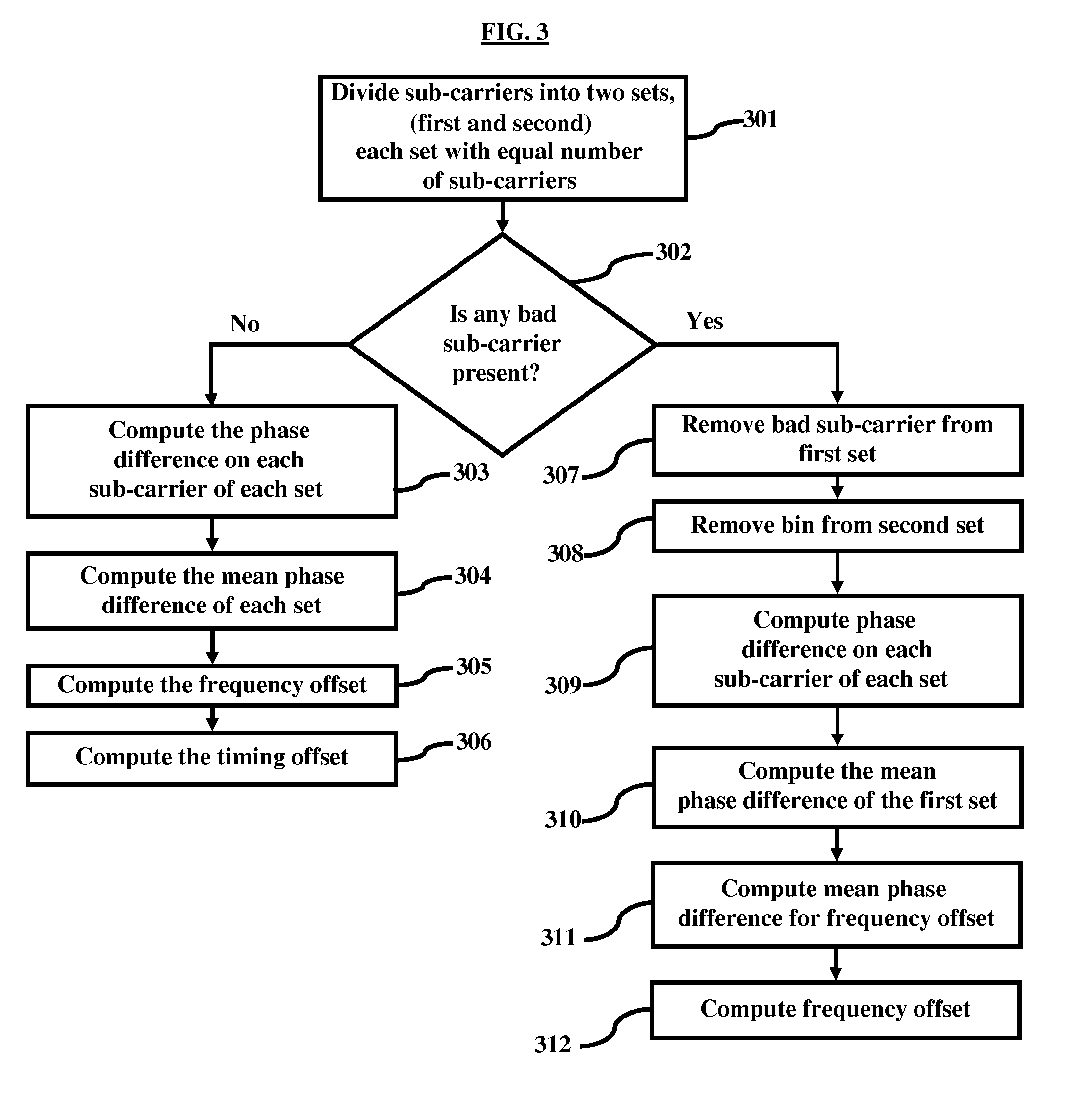Symmetric pilot processing for robust timing offset and frequency offset estimation in ISDB-T and ISDB-TSB receivers
a timing offset and frequency offset technology, applied in the field of communication systems, can solve the problems of large bit error rate, large noise in the estimation of timing and frequency offsets, and degradation of system performan
- Summary
- Abstract
- Description
- Claims
- Application Information
AI Technical Summary
Benefits of technology
Problems solved by technology
Method used
Image
Examples
first embodiment
[0021]FIG. 2, with reference to FIG. 1, is a flow diagram of a method herein. Sub-carriers are divided (201) into two equal sets and the phase difference on each sub-carrier is computed (202). Further, the mean phase difference of each set is computed (203) by:
[0022]ΔΓL=∑i=1MΔφLi / M(2)ΔΓR=∑i=1MΔφRi / M(3)
[0023]Furthermore, the frequency offset is enumerated (204) by (ΔΓL+ΔΓR) / 2. Lastly, the timing offset is computed (205) by (ΔΓL−ΔΓR) / N, wherein N is the mean distance of bin indices between the right sub-set and the left sub-set.
[0024]In a traditional way, if a bin is a bad bin and all other bins are good, then the bad bin could simply be removed from the computation of the mean phase difference in equations (2) and (3). In this context, a bin is “bad” when the received signal magnitude on that bin is too small. For example, if the signal magnitude is below half of the average signal magnitude, one may assume this to be a bad bin. This can cause some serious problems especially if...
second embodiment
[0035]FIG. 3 is a flow diagram herein, where division of sub-carriers into two equal sets (first and second) is performed (301). The presence of any bad sub-carrier is detected (302). If there are no bad sub-carriers detected, then the phase difference of each sub-carrier of each set is calculated (303). Further, the mean phase difference of each set is calculated (304). Thereafter, the frequency offset is computed (305) and the timing offset is computed (306). If a bad sub-carrier is detected, then the process of performing symmetric processing for bad sub-carriers is enacted. In symmetric processing for the bad sub-carriers, if any of the bad sub-carrier is detected, then that particular sub-carrier is removed (307) from the respective sub-set (first set). According to symmetric processing for the bad sub-carriers, the corresponding sub-carriers in other sub-set (second set) is also removed (308). After removal of the bad sub-carrier, the phase difference on each of the sub-carri...
third embodiment
[0036]FIG. 4 is a flow diagram of a third embodiment according to the embodiments herein, where division of sub-carriers into two equal sets (first and second) is performed (401). In the next step, the presence of any bad sub-carrier is detected (402). If there are no bad sub-carriers detected, then the phase difference on each sub-carrier of each set is computed (403). In the next step, the mean phase difference of each set is calculated (404). Moreover, the frequency offset is computed (405) and the timing offset is computed (406). If bad sub-carriers are detected, then the process of symmetric processing for bad sub-carriers is enacted. In symmetric processing, for the bad sub-carriers if any bad sub-carrier is detected, then that particular sub-carrier is removed (407) from the respective sub-set; i.e. the bad sub-carrier is removed from the first set. According to symmetric processing for bad sub-carriers, the corresponding sub-carriers in the other sub-set (second set) are rem...
PUM
 Login to View More
Login to View More Abstract
Description
Claims
Application Information
 Login to View More
Login to View More - R&D
- Intellectual Property
- Life Sciences
- Materials
- Tech Scout
- Unparalleled Data Quality
- Higher Quality Content
- 60% Fewer Hallucinations
Browse by: Latest US Patents, China's latest patents, Technical Efficacy Thesaurus, Application Domain, Technology Topic, Popular Technical Reports.
© 2025 PatSnap. All rights reserved.Legal|Privacy policy|Modern Slavery Act Transparency Statement|Sitemap|About US| Contact US: help@patsnap.com



